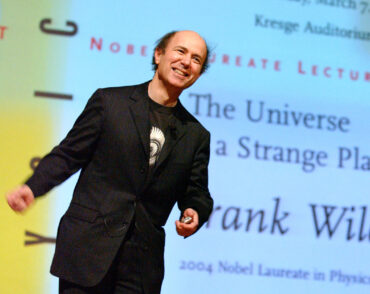
Looking for Signs of Alien Technology
Unusual changes in the atmosphere and temperature of distant planets might be our first clue to the existence of life beyond Earth.
The search for planets outside our own solar system has unearthed more than 4,000 of them so far. The challenge in finding planets is that astronomers aren’t looking for the biggest, brightest or most unusual objects in the sky, as they usually do. As sources of mass and energy planets are relatively insignificant, and they are much dimmer than the stars they orbit, making them hard to discern. But astronomers have risen to the challenge.
New techniques in exoplanetary astronomy now in development will vastly increase the count and give us more detailed information about the objects we discover—not just their masses and sizes but their temperatures and the chemical composition of their atmospheres. Atmospheres are especially significant in the search for alien life because they might be affected by biological processes, the way that photosynthesis on Earth produces nearly all of our planet’s atmospheric oxygen. The search for signs of life is a core subject in astrobiology, the study of life beyond Earth.
But less consideration has been given to a more spectacular possibility: astrotechnology. Could future exoplanetary exploration turn up evidence of advanced technology outside our solar system? What would such evidence look like?
A technologically advanced civilization born on one planet might want to diversify its portfolio by colonizing other planets nearby. (Elon Musk and Jeff Bezos, among others, have advocated that we Earthlings get to work on it.) To make such colonies habitable on a large scale, it would probably be necessary to re-engineer the new planet’s atmosphere to mimic the old one. Such clone exoplanets, with an otherwise inexplicable resemblance between their atmospheres, could be one signature of astrotechnology.
Another possibility is that an alien civilization might deliberately trigger a greenhouse effect to raise a planet’s temperature. A runaway greenhouse effect caused by an accumulation of water vapor and carbon dioxide turned Venus into a hellish wasteland; notoriously, an accumulation of carbon dioxide is currently warming Earth’s climate.
An advanced alien civilization could use this technique in a more controlled fashion to raise the temperature of a cold planet, making it more favorable for life by allowing it to support liquid water. Alternatively, it might be possible to use atmospheric engineering to produce cooling effects. Exoplanetary exploration could reveal “unnatural” atmospheres of either kind.
Anomalously high temperatures on an exoplanet could also be a sign that it is using artificial energy sources. Manufacturing powered by nuclear fission or fusion could look like that. Closely related to this concept is the Dyson sphere, a hypothetical structure named after the physicist Freeman Dyson. It involves deploying solar panels in space, on a colossal scale, to trap a significant fraction of a star’s energy output and beam that energy to planetary manufacturing centers.
The classic strategy in SETI, the Search for Extraterrestrial Intelligence, is to look for signals that an advanced technology might broadcast. But this is an inefficient strategy, since almost all of any potential signal would miss our detectors. The pursuit of exoplanetary astronomy suggests a different approach. An alien species that wants to communicate could draw the gaze of exoplanetary astronomers to anomalies in its solar system, effectively using its parent star to focus attention. This might turn out to be the most practical way to open communications across the universe.
Originally appeared on February 13, 2020 on The Wall Street Journal website as ‘Looking for Signs of Alien Technology‘
Frank Wilczek is the Herman Feshbach Professor of Physics at MIT, winner of the 2004 Nobel Prize in Physics, and author of the books Fundamentals: Ten Keys to Reality (2021), A Beautiful Question: Finding Nature’s Deep Design (2015), and The Lightness of Being: Mass, Ether, and the Unification of Forces (2009).


